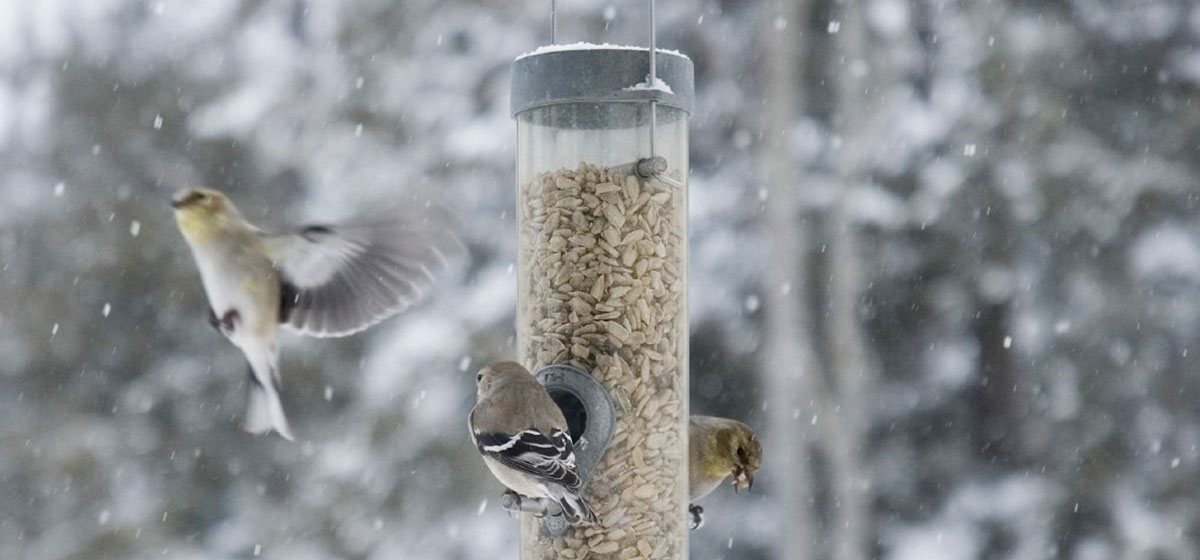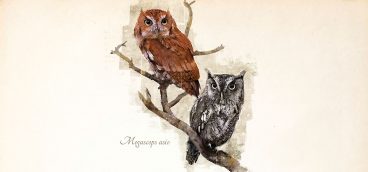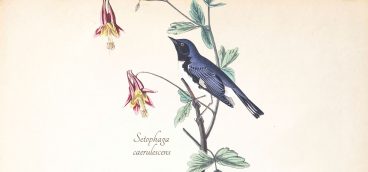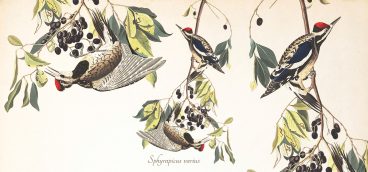
Next time you turn the heat up a notch or pull on a sweater, consider the birds. Birds that winter in western Pennsylvania wear their own down garments, feathers fluffed on cold days to trap warmed air close to their bodies.
Bird temperatures run around 104 degrees on average, and on our coldest days, birds need all the extra calories they can find to keep their internal furnaces burning.
In winter, birds travel in mixed flocks searching for food. Tiny, swift and always on the go, the birds that come to your winter feeders are likely residents of your neighborhood year round. Black-capped Chickadees and Tufted Titmice are two common backyard species. Downy and Red-bellied Woodpeckers love seed feeders as well as suet. Any flavor will do, and the rendered fat provides high-density calories when the north wind blows. American Goldfinches have lost the bright yellow plumes of summer and spend the winter in drab attire. Nyjer thistle is their favorite meal, and small-slotted feeders deter squirrels. Carolina Wrens, whose “tea kettle, tea kettle” song will fill the air this coming spring, join in the melée around backyard feeders, their tilted tails and cinnamon bodies bringing contrast to the mix. Northern Cardinals will likely visit, too. Look for them in contrasting, sexually dimorphic pairs: the bright red male and subdued hues of his mate. Cardinals vocalize year round, not just during spring breeding season and, atypically in songbirds, both males and females sing. They brighten up any overcast day in our region. In my experience, they tend to be the last birds feeding at the end of the day.
Who else might visit? White-breasted Nuthatches love our woods. They tromp up and down tree trunks in search of insects, but they’ll come to feeders, too. Their northern cousin, the Red-breasted Nuthatch, down from the piney woods of Canada, might also pay a visit. Both are less upright in posture than most birds and quicker to grab a sunflower seed and dash off to a private perch to dine.
Blue Jays are common enough, and when they come in to land, you’ll be surprised at their size relative to other backyard birds. Jays are big fellas! Mourning Doves, named for their dolorous sighs, will peck for fallen seeds beneath feeders. So will sparrows, the white-throated among them. The more urban your avian grocery, the more likely you’ll also attract House Sparrows, an invasive species most closely associated with discarded French fries and fast food dumpsters.
These are our most common backyard birds, and the more you watch their antics, the easier it will be to learn your feathered neighbors. So, too, will you begin to recognize the itinerant visitors that might stop by: Sharp-shinned and Coopers Hawks looking for a take-out meal; a Yellow-bellied Sapsucker drawn to all the feathered activity; Crows, Grackles, or Starlings come to boss the smaller guys around; an American Robin, whose migrations are more local than long distance, looking for a handout. No matter who comes to your feeders, the birds of winter merit our admiration for their tenacity and pluck.
The Audubon Society of Western Pennsylvania (www.aswp.org) sells feeders and Beechwood blend seed mix, prepared especially for our birds. A purchase there supports environmental education for kids and families. Wild Birds Unlimited is another for-profit source of all things seed, suet and feeder.





